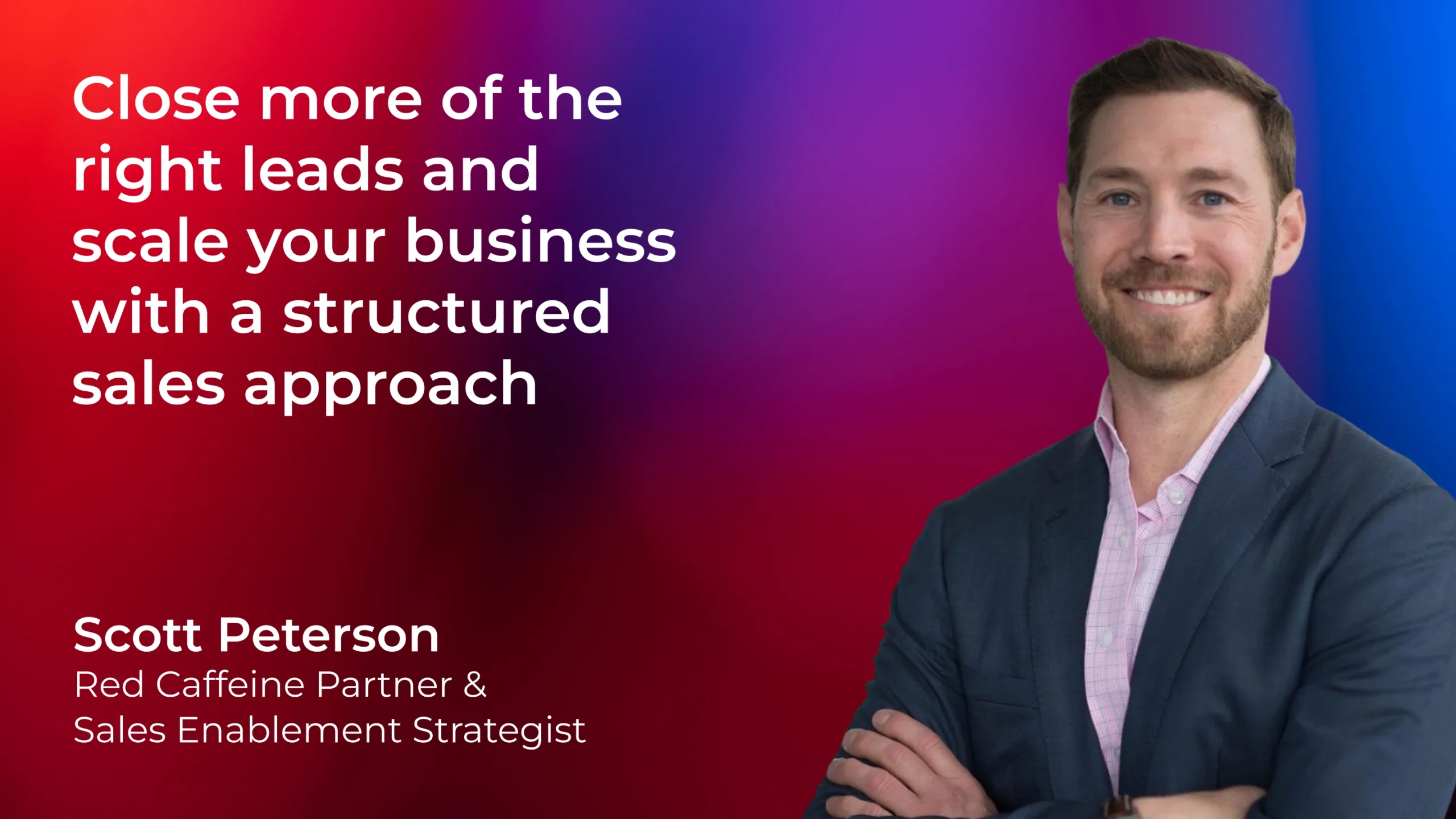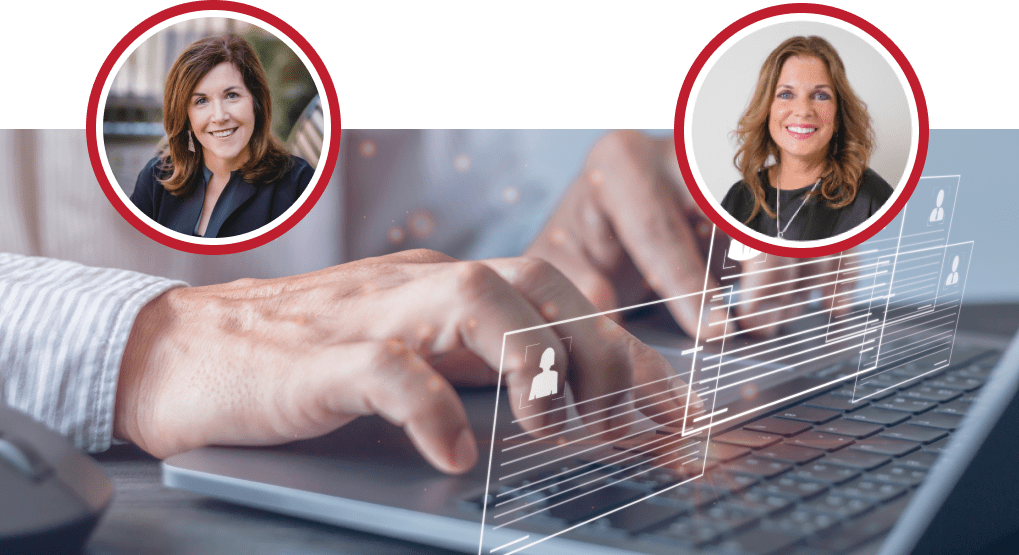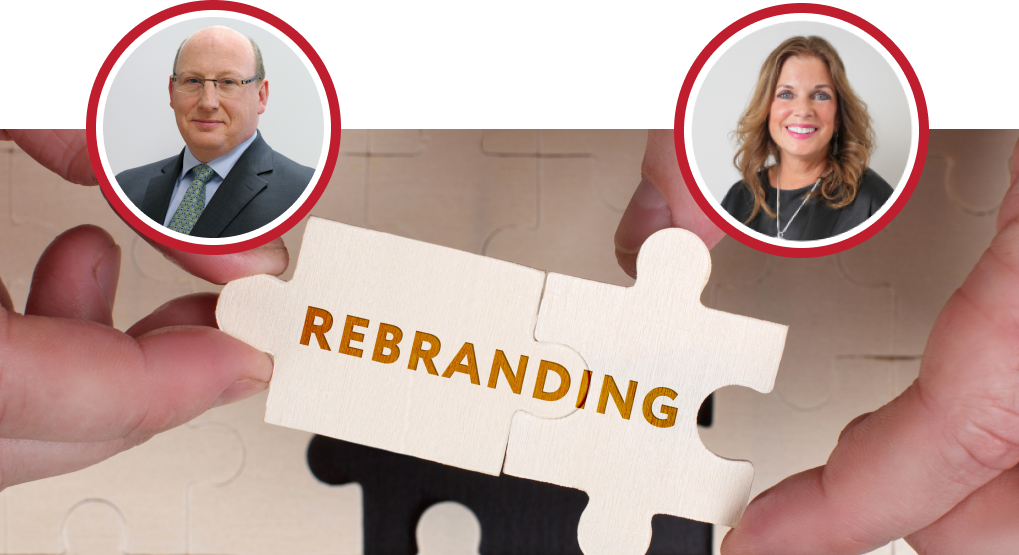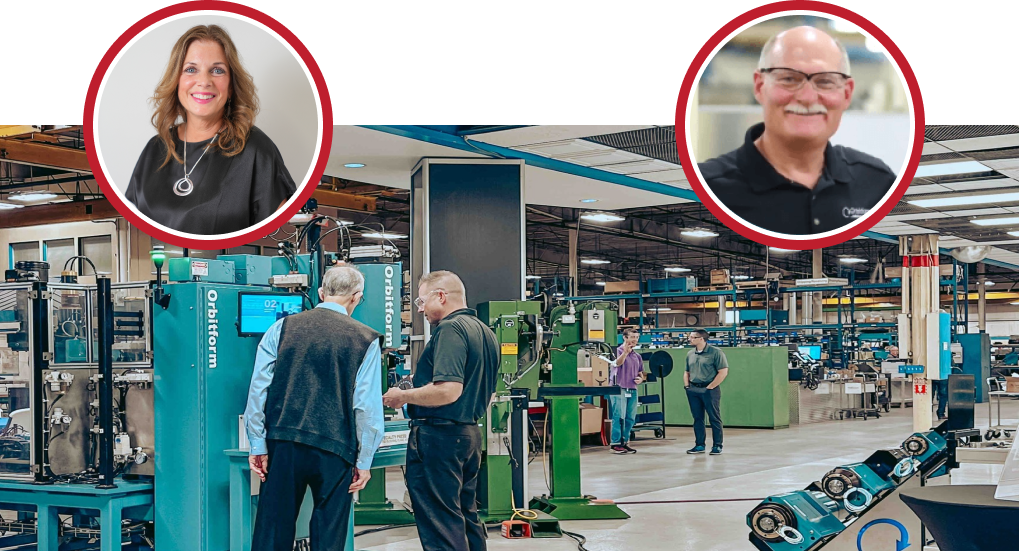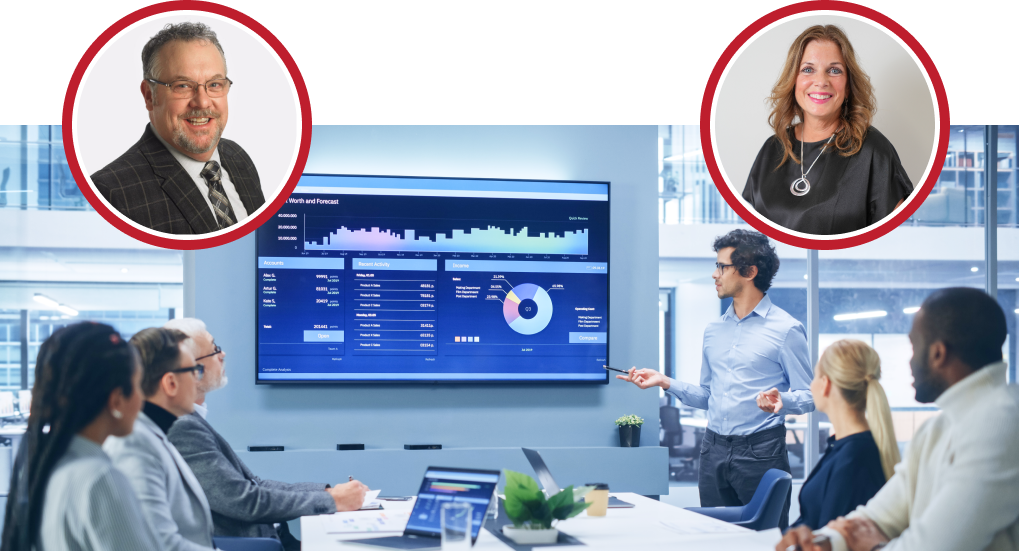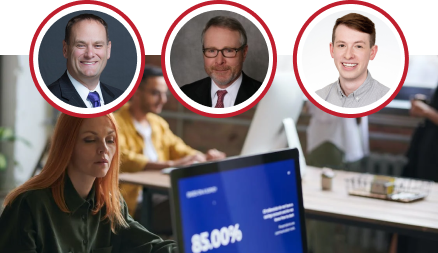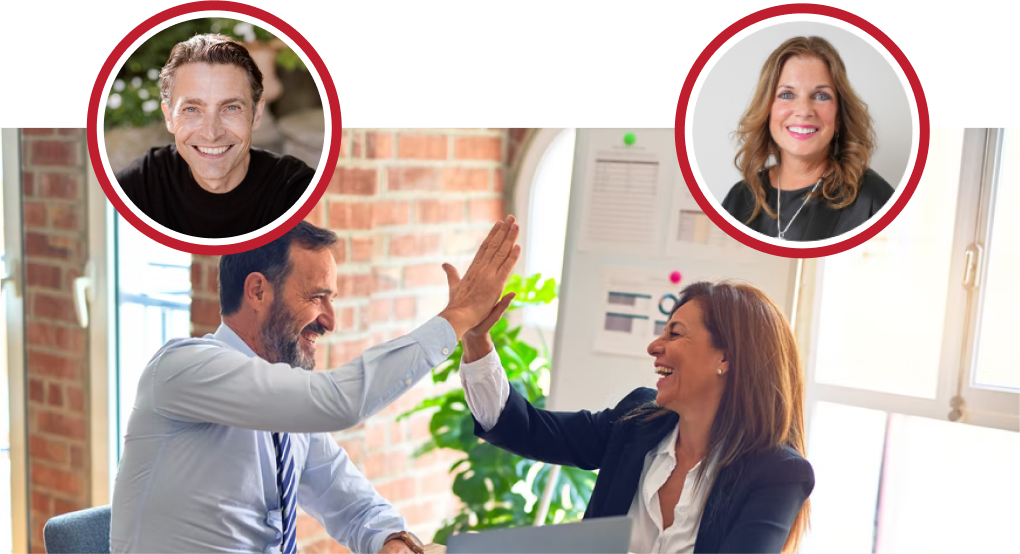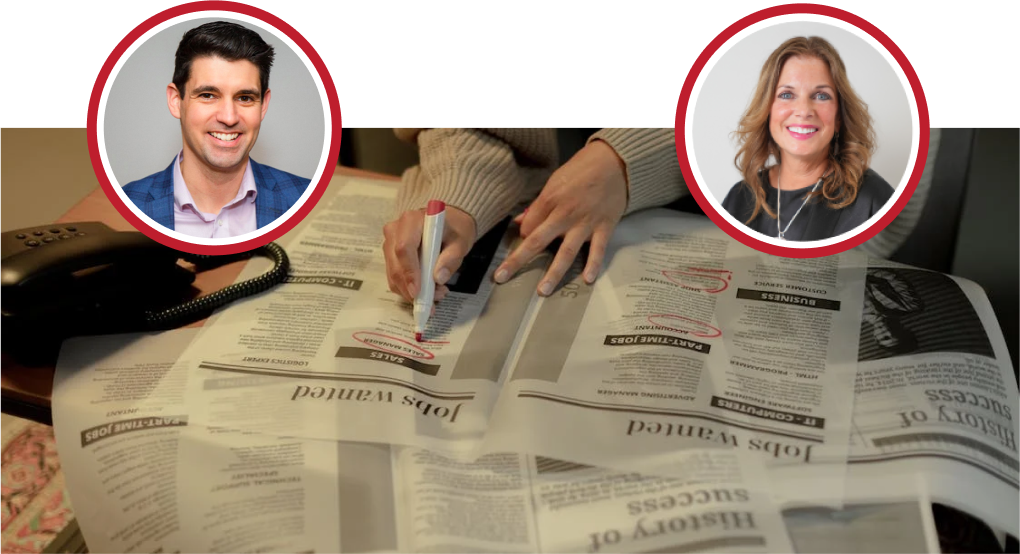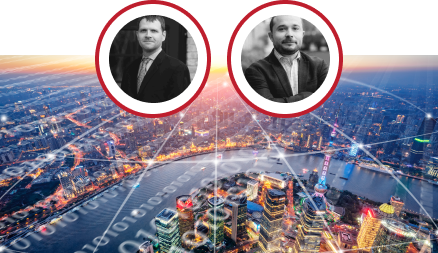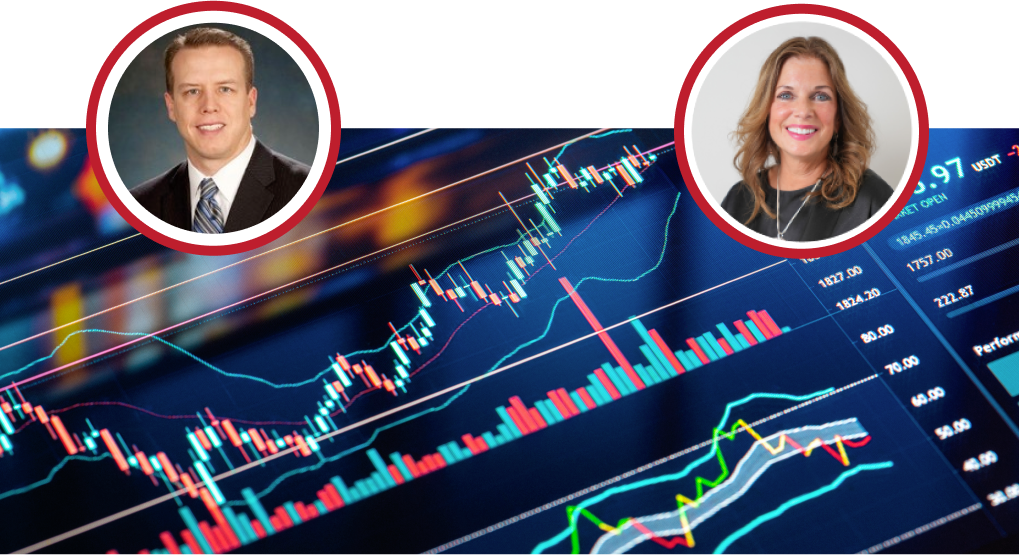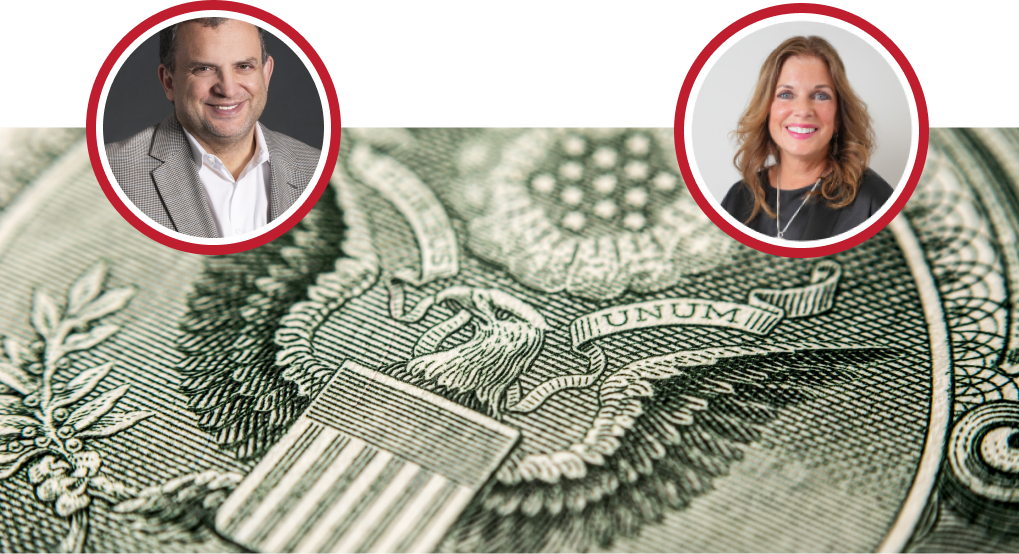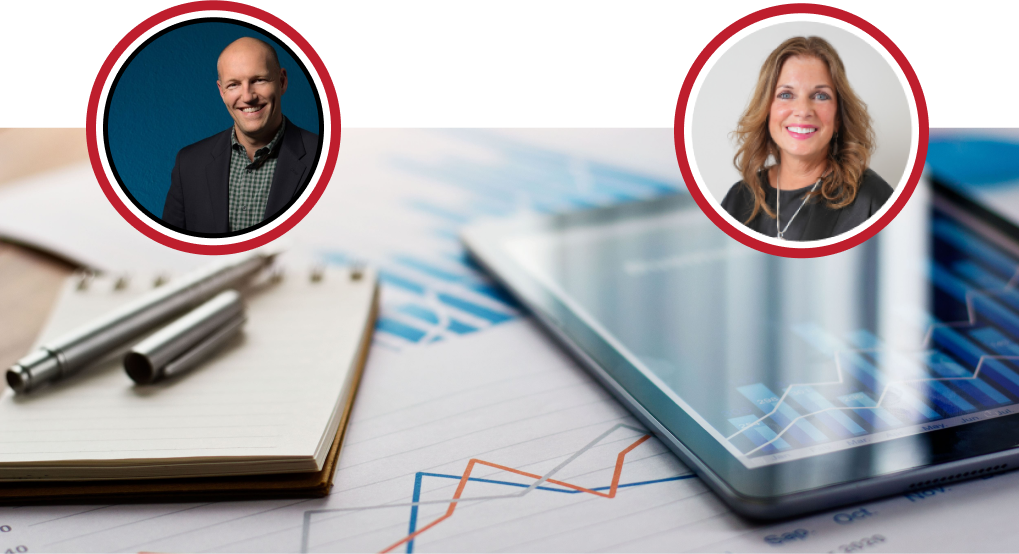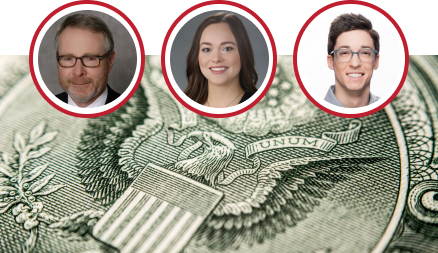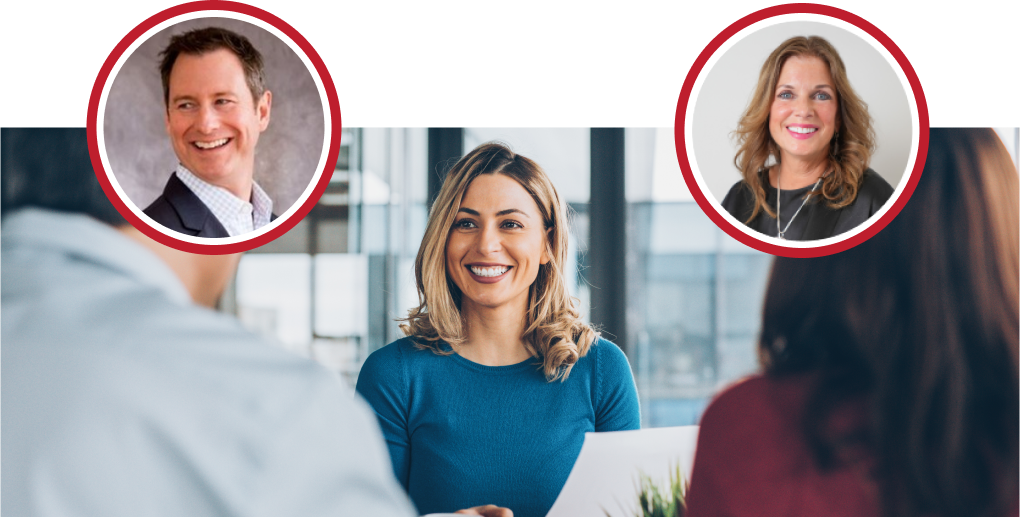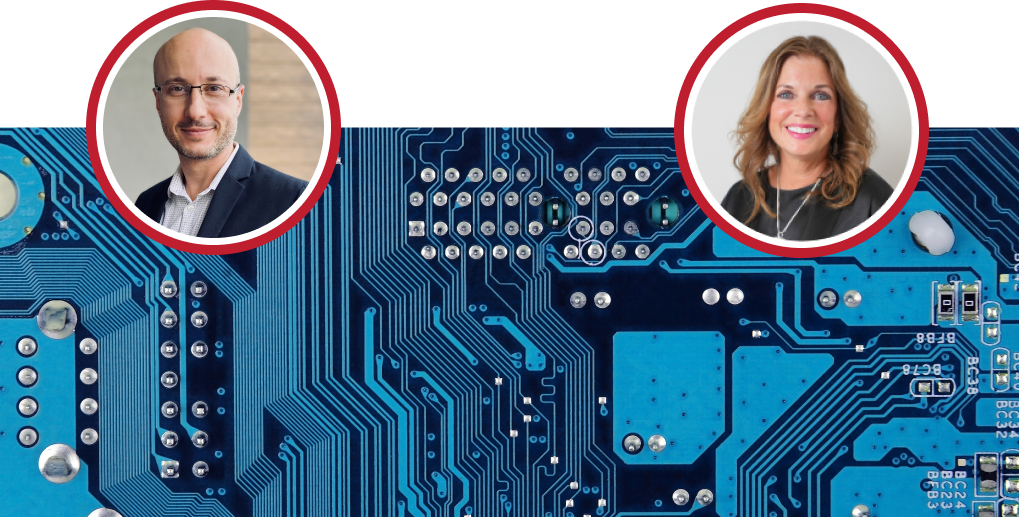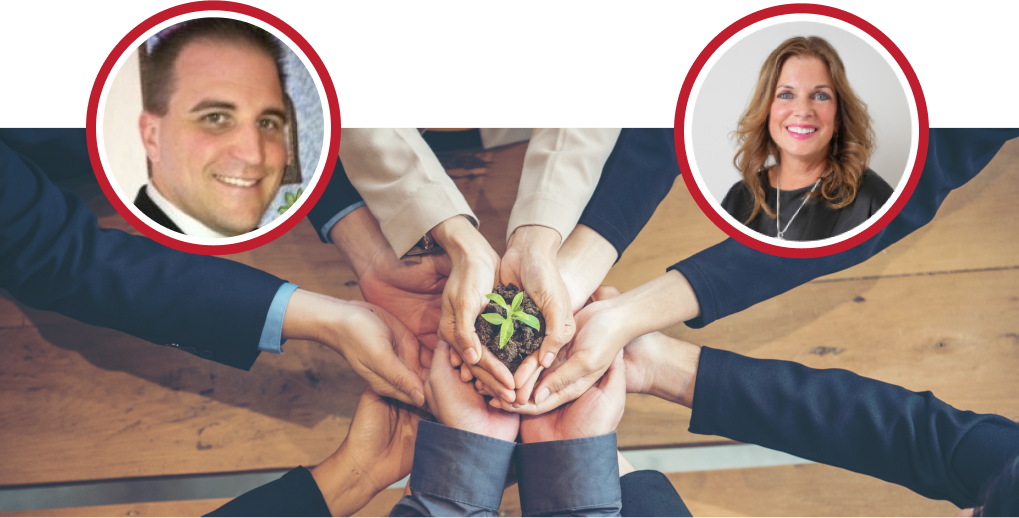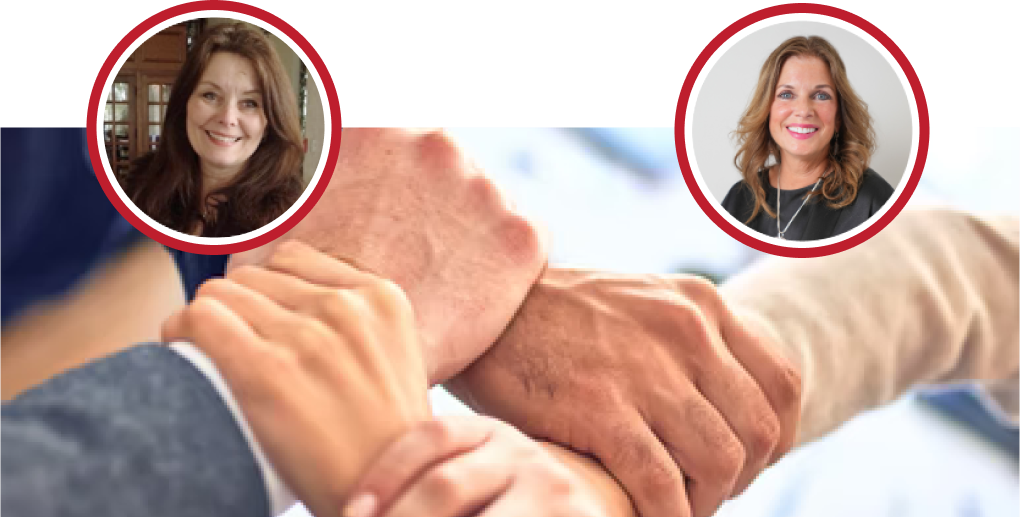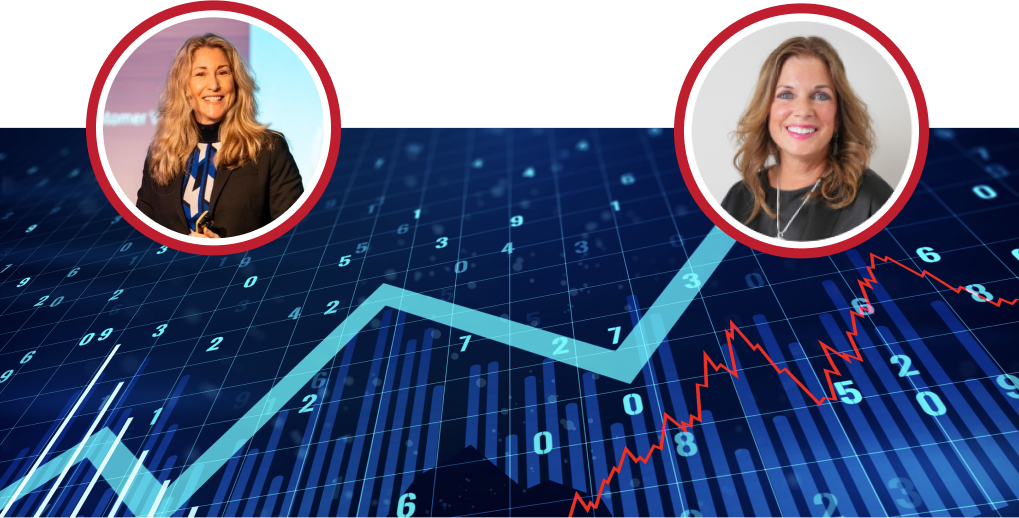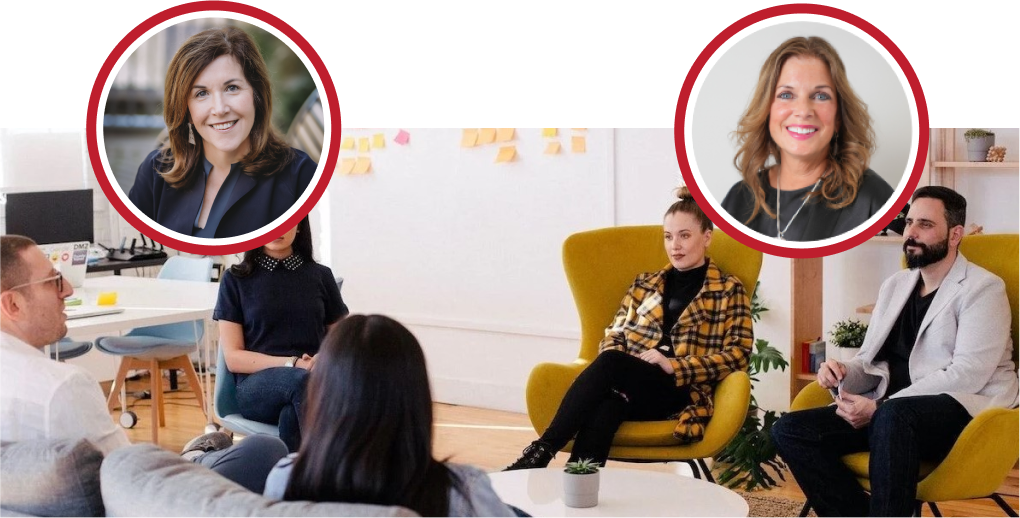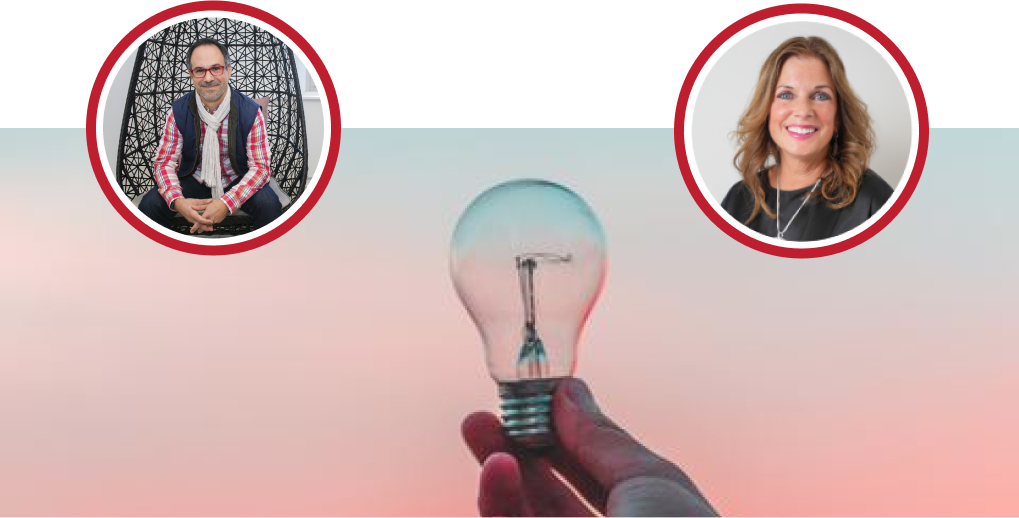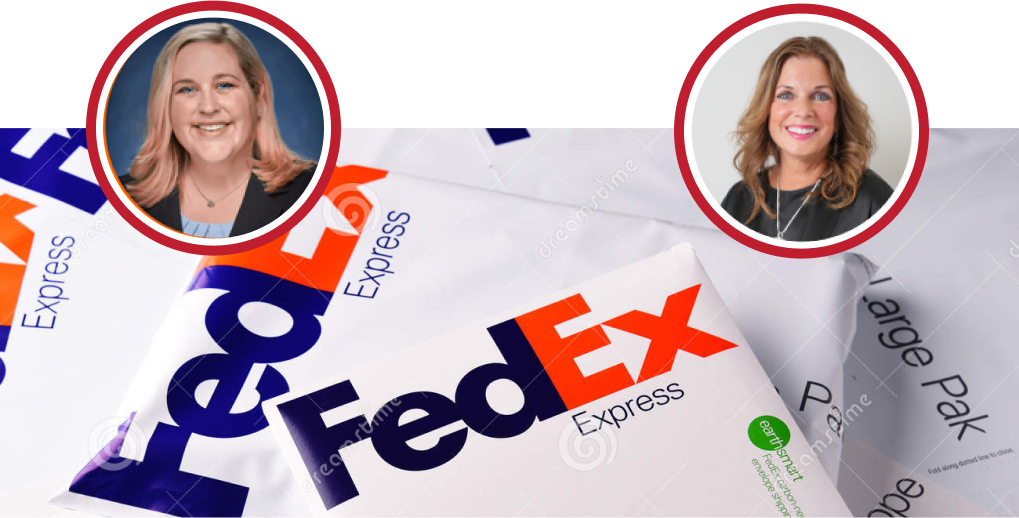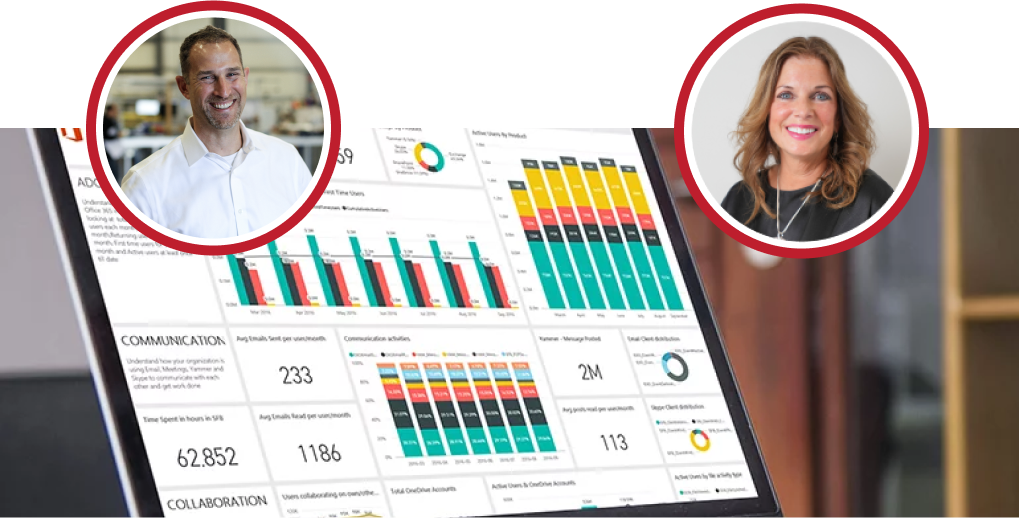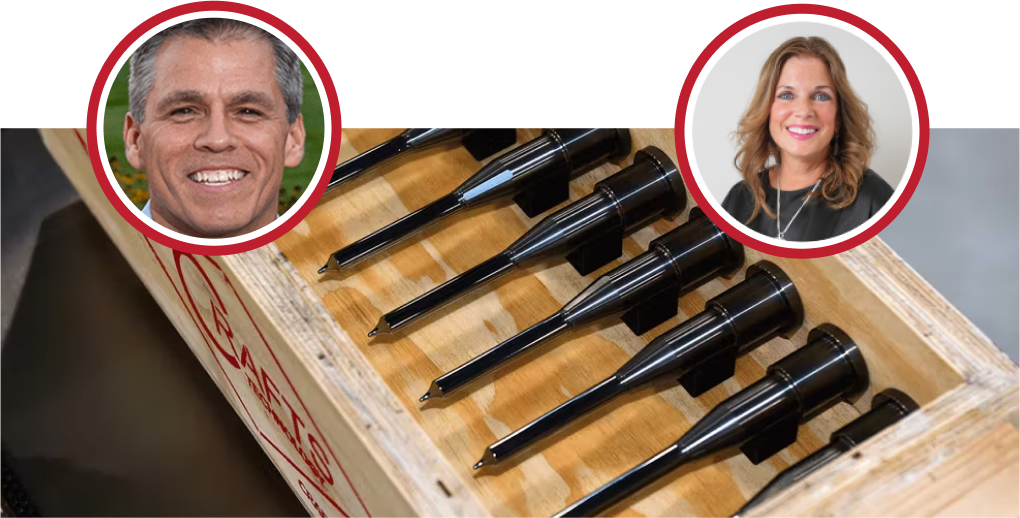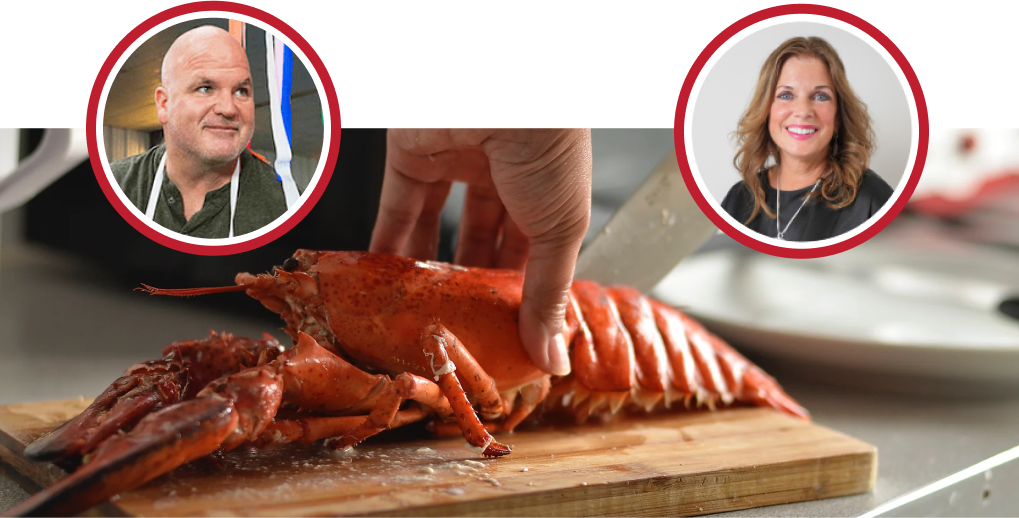Kathy: Hello and welcome to the May episode of “Business as Unusual.” We are so excited to kind of switch gears this month and do something a little bit different we’ve got Ami, who is a recognized thought leader on financials, the CEO of MultiFunding, and also the author of the “Growth Dilemma” and a regular contributor to Ink Magazine. He’s going to sort of turn the tables on me, and he’s going to ask a lot of questions, and he’s going to be joined by some amazing business leaders today on our session, and we’re gonna be taken through this the way to think funding our businesses in different unique ways today. So, we are all going to be answering these questions live that owes us, but we want you to participate as well, so if you want to answer the questions in the chat or ask questions in the chat, please do so as we go through the session so Ami, I wanted to just give you a chance to tell us what else is not on your bio before we introduce the rest panel welcome.
Ami: I have two dogs and a house; thank you, Kathy; it’s a pleasure to be all with you 12 years ago on a Friday, I lost my big fat corporate job as a Chief Innovation Officer for the largest issue of credit cards to small businesses in the United States, and we completely decimated in the great recession before it was my turn to be let go I helped let 960 people go and my turn came on the Friday after getting let go I went to the bank I deposited a check for my full home equity line of credit then I went home and told my wife what I did and started my company MultiFunding on Saturday what we do at MultiFunding is we work with business owners and entrepreneurs to help them think through their growth plans how big they want to get how much risk they want to take and understand if they choose to how they can use debt as a strategic tool to grow and also stay in control of their business.
Kathy: Oh, wow, so that sounds a little scary using debt to grow our business. So, I don’t know that many of us bootstrap businesses are really super comfortable with that topic. So, I’m really excited to dig in today. So, while we are dying to get started, I want to make sure I could introduce our panel, so Lily, can you introduce yourself and tell us a little bit about you and edge one medical.
Lilli: Sure, absolutely. Hi, everyone; I’m Lily Zachariah, Co-founder, and President of Edgewood medical. We are a service provider helping the Med-tech and Biotech industry develop their innovative medical device or combination product technologies. So, think as an example of an EpiPen that might be combined or an auto-injector I should say that might be combined with a digital app, so our role is to help those companies compliantly test and develop the necessary documentation to submit to the agency the FDA primarily for approval we’re based just outside of Chicago, Illinois, and we are a ten-year-old company approximately 20 people growing to about 25 in a few months.
Kathy: Yes, you’ve got a fascinating and exciting business; it’s been fun to see your growth over the last few years. Stacy Bales are joining us as well. So, can you tell us a little bit about you your career and a little bit about it?
Stacey: Sure, Stacy Bales, President and Co-owner of Bales Metal Surface Solutions; we are electroplaters and polishers; we focus primarily on plastic injection molds. We’re also located just outside of Chicago in downers grove right now, we have about 30 employees, but we’ve seen 20 growth year over year the last three years, so we’re looking to expand headcount and trying to get new equipment, and so this is going to be a really interesting topic.
Kathy: Yeah, well, I feel fortunate to have worked with you guys for many years, and it’s just been exciting to watch your business grow in the last few years, and you navigate all these challenges for the manufacturing space and so last but not least we’ve got Stephen Oles, thank you for joining us today. Can you tell us a little bit about yourself and Exergistics?
Stephen: Yeah, thanks, Kathy; great to be here, so Stephen Oles, I’m the Founder and CEO of Exegistics. We are a veteran-owned third-party logistics company helping our clients get better every 90 days; we are in five specific regions around the US, Chicago, Indie, Louisville, Memphis, and Dallas founded the company in 2008. So, we are just over 14 years old and about a thousand employees.
Kathy: Fantastic, well, thank you, and for those of you who don’t know me, I’m Kathy Steele, and I am CEO of Red Caffeine; we’re a growth consultancy, and as it says on this slide, we build badass brands that people want to work for and with so thrilled to get started today we do as a business always talks to our clients about the different growth lane avenues that they can take to grow their business. So, we’re excited to see how we may be able to accelerate things. So, I’m going to toss the pan and the QA over to Ami, and let’s jump in.
Ami: Great, thank you so much; so if you think about it for everyone here on the screen and everyone in the audience who’s a business owner or an operation entrepreneur, one of our toughest jobs as leaders is we are constantly making decisions about what big and small investments we want to make how many people to hire? Do we open a new division or new branch? Do we diversify? Do we add new products do we buy some more equipment do we train some marketing up, do we try some different things constant decisions about big and small investments that we need to make? I would argue that we shouldn’t make these investments without a plan, and it’s really hard to have a plan without a goal. So, my question for you, Lily, Stacy, and Stephen is, do you have a goal for your business? A clear top line and bottom line goal of what you’re trying to get your business doing three years from now, really?
Lilli: I get called on first, absolutely, but we do, and I would credit the fact that we utilize the entrepreneurial operating system eos to really help us guide and have a plan for not just three years, but our one-year and our 10-year plan and are constantly revisiting that to help us guide our decision-making process in terms of where we want to go as an organization.
Ami: Great, Stephen, how about you?
Stephen: Yeah, I’ll put a second plug-in for eos interaction; we are also an eos company, so we’ve got a very clear 10-year vision, three-year plan, and one-year operating plan, so we chart this out; we meet quarterly to take a look at our quarterly goals but all ties to what we want to accomplish on an annual basis.
Ami: Cool, and how about you, Stacy?
Stacey: Right on this bandwagon, I don’t know we’re newbies, though, so we just started the first of the year and just did our big hairy audacious goals, and we’re really excited about it and get that clear picture and direction for not just my sister and me running the company but to be able to communicate that to everybody is important so really looking forward to seeing where we get traction in the end.
Ami: Awesome; as you think about your goals for the next three years, you might say you’re not going to get there well; it would be almost impossible to get to reach your goals without making investments in your company; you’re going to have to hire two different things to add products equipment et cetera, and the question is, are you making them fast enough to reach your goal and give the right capital structure in place to support your goals one of the things I’ve learned is that it’s pretty impossible to look forward without starting by taking a step back, so my question for each of you is what investments have you made in your business in the last 12 months what you have invested in the last 12 months, Stephen?
Stephen: Well, I think we reinvest a large portion of our profits back into the company every year, so we take a look at God, where do we want to add more, either sales effort or operating execution efficiency, so we sit back in our annual planning process and think about God where do we want to make those investments what yield do we want to get out of those investments as well so typically for us it’s either growth-focused or operational efficiency-focused usually people or software is what we think where we focus on.
Ami: So, can you share just a couple of examples of actual investments you’ve made in the last 12 months?
Stephen: Well, we actually engaged a consulting firm to think through our brokerage business, so one of the things we do for clients is transportation, so engaging that firm, we made an investment earlier this year to think through what our three-year strategy looks like and how we need to think about that from a people perspective so what roles are critical at what point in time in that growth plan.
Ami: Okay, how about you, Stacy? What are the couple of investments you’ve made in the last 12 months?
Stacey: So, right now we’ve been focused on equipment my sister and i inherited the company from our dad about 12 years ago now and it’s kind of like buying that house that’s like 25, 30 years old and your roof starting to cave in a little bit and your your hvac systems on its last limbs and so now and with new technology coming along it’s really just kind of been picking away at different segments of our business and upgrading equipment as the capital comes in so we replaced a lot of air systems last year and are working on some new plating lines this year and on the equipment side of things those are obviously our biggest investments and then really working on infrastructure as far as training programs and how do we get new talent inside of our building and and escalate them as quickly as possible so we’ve been focusing some funds there and then hitting it on the other side with our branding and marketing campaigns to not only recruit new customers but also to try to attract and retain talent so that’s pretty much where the bulk of our funds are going right now.
Ami: And, how about you, Lily?
Lilli: Yeah, so for us, very similar I would say the majority of our most recent investments have gone into people, so two different areas; early last year, we made a strategic decision to expand our technical capabilities in a specific area given how the landscape is changing with Health Care, so we invested heavily in some senior leadership there we’ve also recently been investing heavily in sales and marketing so complete overhaul of our messaging our website and also BD personnel, so that has been a huge another huge area of investment for us most recently.
Ami: Great amazing.
Lilli: Yes, that’s true forgot that it’s two years old it doesn’t seem so recent anymore.
Ami: Yeah, some of what we invest in is pretty miserable did a direct mail campaign or some new marketing you can pretty well quickly tell if it’s converting or not hire new salespeople are they selling or not new equipment new location then also sometimes we’re called upon as leaders and it’s perfectly okay to make more intangible investments like branding employee training or a new CRM system i would argue and suggest that each of you and and in this audience think about sort of look at your financial statements a little bit differently today in our profit and loss on the top we have our variable expenses and the bottom we have everything else all the operating expenses lumped in everything that we spend from rent to travel to mortgage payments to whatever it is is all sitting there how about starting to split that up between money which would be called operating expenses that we have to spend to keep our trains running and investment expenses would be money that we want to spend because we’re trying to grow and expand or reinvest in our company. So, we can actually start to see and understand how much money we are spending every year in trying to grow and get better and change and that we can start to see and and measure that and if we could do that i think it would be a very helpful tool to help us grow and expand and start to measure and track what we’re doing that’s something that we’re going to be able to do right here i couldn’t expect you or anyone in the audience to do but if you can and you’re interested i encourage you to go work with your bookkeeper or your controller or your cfo or maybe you just do it yourself and go ahead into your general lender and tag what your non-essential expenses over the last 12 months so you can start to see how much you’re actually spending we we did it for our company and we’re a smallish company and what we found is that over the 12-month period we had spent three hundred thousand dollars on trying things on experimentation and i looked a mind boggling number to me because i said holy cow if i would have an extra 300 000 in my pocket that’s a lot of money but to steven’s point i’m reinvesting it in my business my biggest asset that i’m trying to grow and expand and if you can start to get a handle on that number it’d be very helpful my question for each of you is and again this is not an art an answer and precision but if you think about all of your operating expenses that you spent say in 2021 if you were to guess what percentage of those operating expenses you are reinvesting or investing back to the company what percentage do you think that would be Lily do you have a gut sense and if you’re okay, how about you Stacy?
Stacey: For 2021, I think we were somewhere between eight and ten percent went back into the company.
Ami: Okay, it’s a fairly measurable percentage, and Stephen, how about you?
Stephen: God, we’re probably closer to 40 to 50 percent of net income is reinvested back into the company.
Ami: That’s super aggressive.
Stephen: Yeah, yeah.
Ami: It’s pretty important, if you think about it, to be able to track all this stuff. I can’t. I don’t think we have it, but I’m happy to send anyone who wants it; we actually built a scorecard for ourselves where we took all of our projects, and no, I’m sorry, I don’t have a slide for it, but that’s okay, and we said what we’ve spent is it miserable and am I happy that I did it some. So, i could see that 300 000 where it all went under what initiatives somewhere i would do that again in a second maybe i should do more somewhere that was a dumb waste of money and somewhere it’s too early to tell all of it being okay you if you have an investment portfolio you’re going to have some disasters i would argue that you should set a timeline for the different investments that you make meet with your management team regularly or quarterly on it to check in on it how are things going some investments you might want to double down triple gallons some you might want to kill but keep keep in this methodology of checking your investments all the time acknowledging some investments won’t have an ROI and that’s okay, we rebranded our website last year we’re a service company i’ll never know for certain exactly in a quantifiable way what that yielded for me but it’s okay with it we hadn’t done it for seven years i’m okay and also i encourage each of you to reflect think about the biggest investments you made this past year would you do it again if not what have you learned and can you think of an investment that was a disaster can any of you think of an investment that you made in the last 12 months that just was a disaster stephen?
Stephen: God, how much time do you got? I think again, the way we view investment, we will allocate a portion of our net income to investment; again, what we typically do is make micro-investments, so if we’re going to allocate 250 000 new sales resources, we’ll deploy one sales resource see how he or she does right so we’ll about we’ll evaluate that investment but I would say probably, our where we’ve made mistakes in the past is software investments, and I would say in the past 36 months where we’ve made an investment a software platform holding hoping to get better productivity visibility into numbers and and and really haven’t gotten the results we’ve wanted so I’d say software probably is our biggest swing and a miss probably the last couple years.
Ami: Lily, how about you?
Lilli: Yeah, I would say yes, we had one very much comes to mind, and it was a personnel hire that ended up not being a fit, didn’t have the right background, didn’t have what we needed, and it was a huge disappointment when we had to part ways, but we know it’s still the right decision for the company so for us as just finding the right fit we also had a similar scenario in terms of smaller investment, but it’s still software-related hoping to get some more automation out of it, and it can only go so far so everything software related seems to just have to need some more customization and tweaking to get it to that perfect point and so that’s a little bit more investment required there as well, so those I would say are the big two.
Ami: And Stacy, how about you?
Stacey: I think we’re a little bit lower risk than maybe some other cus companies and that living through the recession here in 2008 2009 and being younger business owners, I think our tolerance for risk is a little bit lower, so we tend to really debate new investments and things pretty heavily before we do it to make sure that we can pull it off, in the end, it does tend to drag some projects out maybe a little longer to your point software investments we’re in the middle of an ERP upgrade which is always fun, and it’s taking a little longer than we wanted to, but I don’t consider that a flop because we haven’t overspent to accomplish it’s just taking a little longer than we would have hoped.
Ami: I just want to say that if we don’t have some investments in our portfolio of things we’re investing in our company that are a flop, we’re not taking enough risk, and we’re probably moving too slowly, okay, some of the things we try aren’t going to work out if you don’t try some new marketing or sales tactics and they don’t work what did you learn you continuously have to be willing to take some risk and understand that some of it are not going to work out maybe here’s the important question I’m going to ask each of you if you think about the way you were investing in your business last year and you kept that investment pace up do you think you’re on track to meet your three-year goal, Stacey?
Stacey: Yes, absolutely.
Ami: Great. Lily, how about you?
Lilli: I would say yes, but with an asterisk, and the asterisk comes in the form of we think we could probably double where we thought we’d be in three years if we actually made even more investment, so I don’t think our I think we need to revisit our three-year goal and up it and make more investments.
Ami: Okay, and Stephen, how about you?
Stephen: I’d probably answer the same way; yeah, I think again we, we were affected by Covid but especially our staffing business. So, I think our investment last year is kind of different than the investments we’re making going forward but yeah, I would think we’re our five-year growth rate’s about 30 just under 40 a year growth, so I think again those micro-investments is typical, how we think about risk and risk tolerance.
Ami: Got it okay, we’re through part one everyone’s still sitting or standing who’s ready to start stretching who’s ready to start stretching your limit if you think about it as we decide how much to invest in our business or reinvest which is essentially putting money back in that we could take out put into our pocket we’re taking an element of risk as we do that and when we make decisions about risk we mix up the left side and the right sides of our brains we have the forecasts and spreadsheets and the models and the projections and what the numbers tell us and then we have our feelings and our emotions and our egos and our prior experiences with money and the stage where we’re at in our life and then we kind of push it all up in a pit and that’s how we kind of come up with our answers and they change over time we each have a risk tolerance that also changes over time some of us are extremely risk flexible we would literally sell our firstborn for the company and now there are others of us are much more risk-averse and much more risk concerned maybe put it in a bit more of a realistic spectrum if you’re less flexible you would consider putting a lien on your house to take a loan to get growth capital for your company and if you’re risk averse you would not personally guarantee a loan for your business your risk neutral you’re somewhere in the middle Stacy, how would you roughly think about your risk tolerance today?
Stacey: Well, knowing that I am the personal guarantee of all of our business loans definitely have some risk in there, but again, trying to stay calculated at what we’re putting our money into and new marketing strategies, new equipment, things that we know we can get the ROI on again I still think we’re a little bit risk intolerant over here as far as making giant leaps, and I don’t know you’re asking a lot of good questions and you’ve got me going now that’s what you wanted right.
Ami: Okay, all right, we’re done; thanks. Have a good day. Lily, how about you?
Lilli: I would say I’m kind of risk-neutral as you described your two scenarios but recognizing it needs to be more risk more risk-taking.
Ami: And Stephen, how about you?
Stephen: Gotta, I would say probably the opposite. I started the company in 2008, so the great recession was just kicking off, so I did literally bet the farm, so I put everything I had into the company to get it going; the way I view risk now is I almost feel I have a greater responsibility with the number of employees I have right so so thinking about how I need to sustain the business and create a great place for them to work at is definitely part of how I view risk right now. So, reinvesting profits from the company absolutely. Do I swing for the rafters every time I make an investment? Not so much anymore.
Ami: Okay, that’s a good point, and it changes over time for sure; what I often find, though, that happens isn’t like steven like me. I literally risked the farm to build my company, right what I did was literally, if you think back about it, literally insane okay and what we learn though is that sometimes what I see is in those first few years, people take incredible risks and then if they’re fortunate enough to get through it and be sitting in rooms like this today they almost have post-traumatic stress disorder, and they never want to take the risk again and they think that debt is evil and be careful death can be evil but sometimes really the time to really throw the fuel on the fire and really grow and expand is when you’ve worked out your model so ironically the debt is less risky if you’re at a point where you’ve actually worked out your model, so that’s just something really to think about you think about it.
Kathy: On that point, though is, there certain like points that happen. I was like running down risk waves, so of course, when you’re starting up your business, you likely don’t have a lot of access capital, and you do need to put your house online or some other form of equity on the line or take equity as mature your business those are some of the high five moments where you’re like oh, my house is not is no longer on the business like certain risk inflection points that you should be paying attention to to the ups and downs those waves.
Ami: I wish it happened in the straight line and i wish there were like consistent patterns for every business because every business evolves evolves differently right and so and then people stage and and it’s a balance between what’s going on in the business and what’s going on in people’s personal levels as well so as you get all elder you might or at later stages of your career you might be less inclined to take risk okay or sometimes there’s a there’s a wide spring of where people just do illogical things that in my mind are logical one time early on my practice i had an entrepreneur who had a cleaning company in san jose california and needed some money this was during the great recession and we got him an SBA loan for six percent on the 10-year loan for like 800000 that required a lien on his house and we’ve had a monthly payment of about 8 200 which he could well afford and would have set him on his way and for whatever his reason was and i have no idea he said hello hi water no lean on my house and the only other thing during that time in the market we could find him was a one-year loan at 36 interest which he took against my advice but he took it and he landed up bankrupt a few years later and so whatever on the in his brain maybe it was him or his mom or prior experiences or his wife was saying no lead on my house actually made him lead to a financial decision where having a monthly payment of 80 200 dollars a month instead of something closer to 38 000 a month drove them into bankruptcy [Music]. So, I hope that answers your question a little bit.
Kathy: Yeah, I definitely feel like there are a lot of life circumstances to that drive, especially private companies.
Ami: Absolutely. Okay, here’s a question for everybody, each of you; why don’t we start with Stacy? What is restricting your growth today?
Stacey: I’m gonna go with people; we’re a service company, so everything that we do here is based on direct labor hours; the fewer people you have, the longer your lead times are, and the less work you can push through, so it’s definitely people right now.
Ami: Okay, Stephen, how about you?
Stephen: I’d probably say the same thing; yeah, I think the great resignation is alive and well; finding and retaining talent certainly is a challenge, I think, for everybody on the staffing side of my business, just getting people who want to go to work quite frankly so.
Ami: Got it, and how about you, Lily?
Lilli: I would echo people as well as automated processes, so we currently are looking to try to move into more automated processes to increase our efficiencies.
Ami: So, I’m going to flip the question on you; uncle joe just gave each of you a gift of a million dollars with a caveat you have until the end of the year to invest it in things in your business that you’re not doing today and if you don’t invest it he’s taking it back what would you do with the money, Stephen?
Stephen: Certainly more salespeople, so I would invest that in more salespeople I would invest that probably in an upgrade in a few of our software systems to drive efficiency.
Ami: Okay, how about you, Stacy?
Stacey: I know Kathy would love this answer, but I know we’re missing some gaps on a customer relationship module that works with our ERP system, and all the marketing that they’re doing for us would be one investment and then upgrading some of our plating lines would be the second half of that puzzle.
Ami: Okay, and Lilly, yeah.
Lilli: People, some additional equipment for increased capacity and automation of some of our processes.
Ami: So, a question i have for each of you don’t ask me now just think about in the back of your head is money’s pretty cheap so why aren’t you doing these things just think about it all right let’s keep going [Music] please open up the slides welcome to the velocity matrix and no it’s not a science fiction and kathy we’re going to include you in this and we’re going to now become a group of consultants retained by a marketing company to help them develop three different growth plans for their company and decide which one they want to pick as we’re thinking about this for their business i hope you’ll think for you at the same time about your businesses and how it might affect you please flip the slide kick start marketing is a is a marketing company that had four million dollars of sales in the last 12 months the owner’s profit was a thousand dollars took that home to pay taxes mortgage tuition go on vacation et cetera and over the last 12 months 300 000 was invested back into the business using cash flow their current goal is to be a six million dollar business in three years with six hundred thousand profit which would make their business worth two point four million dollars at a forex multiple please flip this line so i asked them to say if they were to keep investing in their business remember they invested three hundred thousand dollars last year what would they do and so they came up with a shopping loss list primarily of different people that they would hire to keep up their 3x business plan and they believe if they do that and they keep investing at the same rate they invested last year they would be in track to be a six million dollar business in three years the bottom line of six hundred thousand dollars and a business valuation of about two point four million dollars but then i said to them then please flip the slide go crazy forget about all the rules you’re not going to invest 300 000 you’re going to invest 900 000 so go shopping and they have a much more exhaustive list if they ever had 900 000 to invest or reinvest in the company this year they would in fact believe they would be on track to be a 10 million dollar business worth with a million dollars of profit on a business worth four million dollars and then i said to them one more time please flip the slide that was all a little bit of a joke and santa’s not going to be so kind so you don’t have 900 000 to spend you have 600 000 to spend you need to cut your list a little bit and based on that formula they think they’re on their way to be an eight million dollar business in three years with 800 000 worth of profit and their business would be worth 3.2 million and so now we have laid out for them three different scenarios and this is something that you should view and everyone in the audience could do for your companies three different scenarios growth plans about what their company could be worth please flip the slide let’s go back and think a little bit about now what kickstart marketing could do if they want to keep up their 300 000 investment level next year they could sustain that through cash flow they don’t really have to do anything if they want to do the six hundred thousand dollar investment level well they have a three hundred thousand dollar hold to fill and in that respect there’s an option of an SBA loan six percent interest their monthly payment about thirty one hundred dollars a month and no lien on the house because it’s under 350 000 and if they want to kind of go for the home run gold gold plan that would be a nine hundred thousand dollar investment level and they have a six hundred thousand dollar hold to fill well they ten year s payload with a monthly payment of about sixty two hundred dollars a month and a lead on the house or they have an equity investor willing to invest 20 pers give them six hundred thousand dollars for twenty percent of the company please flip the page now we’ve actually for them all the velocity matrix they can see they can see the different plans the different growth plans in the back of the details what investments would support each and they have the financing options and the pros and cons of each to consider they can unders and the benefits of the different choices please flip the slide oops i’m sorry please go back so my question for each of you is why we start with you Lily actually kathy you’re going to vote on this too if you were to make a recommendation to this business owner what would you pick the 1x the 3x or the 2x and would it be the SBA or the equity sorry kathy, first what would you vote for?
Kathy: Yeah, I, mean I’m I probably would go with the 2x plan. I love the limited risk of not having to finance it with a personal asset; I don’t love giving equity up unless there’s a value brought to the table, and so I think an equity play would not, and I think this gives an opportunity to ease into this type of financing model that if you’re seeing traction from this ability to double down on a profit only strategy, I think then maybe a year later I would maybe see taking more investment on, but that’s the way I would I’d approach it.
Ami: Lily, how about you?
Lilli: So, my risk-neutral would say the 2x plan, but given where our industry is at and where I think we can go given what our customers are telling us, I think the 3x plan would actually be a better fit, but I’d like to do it without equity to go the SBA route and not have to give up the equity as Kathy mentioned.
Ami: Okay, Stephen, how about you?
Stephen: Yeah, I probably would answer the same way, either the 2x or 3x plan. I think what Covid taught us, business owners, is the un the unforeseen can happen, so on a three-year growth horizon, taking on a 900 000 investment hoping to understand what happens three years from now again, we all got a little bit of a reality injection with coveting on that one so I would be in between the 2x and 3x really to take a hard look at risk.
Ami: Okay, and Stacy, how about you?
Stacey: What I would say is the 2x plan but based on what we actually do, we’re actually doing more of like the 3x plan, and I would definitely go with the SBA, and thanks to Covid, I mean, there are great rates out there right now for businesses to reinvest so I would go three times playing with SBA.
Ami: Okay, so everyone here is basically willing to take on some degree of debt primarily through an SBA vehicle to try to grow their business faster if you’re making a recommendation to kickstart marketing. Is that correct?
Stacey: Yes.
Stephen: Yeah.
Ami: Okay, now Kathy, are you using any debt or equity to grow your business faster, or are you growing it through cash flow?
Kathy: I’m still going to grow it through cashflow although having gone through this with you in the master class really sparks some thinking, and we’ve definitely been doing some investing, and so I am I’m really looking hard at like the 2x type of plan to accelerate some growth activities.
Ami: Lily, how about you? How do you do it today? Do you borrow, or do you do it through cash flow?
Lilli: Yeah, most of what we’ve historically been doing is the 1x plan through our cash flow. I’ll put the asterisks again on the acquisition of a property that was through the debt financing with SBA support as well in a loan bank loan, but in terms of just our business we did this year earlier, we did begin conversations about how to bring in some money into the company we haven’t solidified our strategy yet, but we are seeking to do something, so this is very timely for us.
Ami: Steven, how about you? How are you doing today?
Stephen: Typically, through cash flow, we do have a line of credit that we lean on to balance out receivables and payables; we have made two acquisitions in the past, so looking at an acquisition that would require debt absolutely.
Ami: Okay, and Stacey, how about you?
Stacey: We also have a line of credits, and then we also have been leveraging SBA loans not only for refinancing our building and helping us to take some equity out there but also for equipment loans.
Ami: Great, so I just want to be clear what line of credits are meant for the line of credits are there for working capital for seasonality and for surprises, in my opinion, in essence, like an equipment line that you’re going to convert and term out general working general lines of credit are not meant or intended for growth capital if you’re making specific investments that you should pay off over a number it’ll take some time to pay back you should do that with term data people get in trouble when they often when they use their line of credits to do that because either sometimes things don’t work out as planned or something comes up, and they need the line of credit, and they don’t have access to it anymore does that make sense.
Kathy: Yeah.
Ami: Okay, all right, let’s know if all of you are comfortable, and are there any questions from the audience? I don’t see them on the channel.
Kathy: They’ll feed us through some any audience questions, but I wanted to go back to some earlier about like metrics and ROI and I and dig into that expense versus investment because I think that was a really interesting thing that you should in the last session I did with you and I was curious is there a way to tie the people investments they’re not either production so I think if I hire somebody on the shop floor, there’s a definite correlation upline revenue on what they would bring to the table in terms of production or Lilly or myself with some of our our team for billable hours, but I’m curious like administrative team investment are things bringing time back, so they’re allowing other people capacity so how do you quantify some of those investments or is that not really feasible.
Ami: Well, i think there’s a couple answers to that first of all you have to be depending on the size of your company as you go through all this a little bit cautious of total analysis analysis you want to do it but it’s down to the micro second of time you want to be careful not to go too crazy so that’s just a general a general point of it but i do think and it’s an an important thing that we should all be doing as leaders and it’s total investment every single one of us including me spend time doing things that are not a productive use of our time that we could hire other people or contractors to do and we could free up our time for bigger thinking or more strategic thinking or working on our business instead of in our business and if we make that decision say i make a decision this year i’m going to hire a virtual assistant and i’ve never had one before and i’m going to try to see if i can free up eight hours a week whatever the number is i would think that for calendar year 2022 because that’s an experiment something that we’re trying an expense that we’ve never had before it would be completely worth it and legitimate to tag that as an investment expense at some point investment expenses become part of operating expenses if they work and then it’s also okay to flip that over let’s say i hired that virtual assistant i free up eight hours a week she or he is working great and i’ll never i can never visualize going back well at that point that virtual assistant is now a part of operating expenses okay and so now what i don’t have because this is all fairly new and nearly methodology i don’t there’s not like rules like you got to try that for 3.46 months before you flip it over or something we we don’t have rules like that so that’s why i mean about analysis paralysis i think an investment expense is something that you’re trying that you’re trying that you want to work on work and if you hit a point where that is becoming kind of part of your operating business then then you move on and that becomes a part of operating expenses does that make sense.
Kathy: No, I think that really clarifies it. I think that was a great analogy and a great example.
Ami: And what I say to people is the concepts are more important than precision, so if you spend more than two minutes deciding something is an investment expense or an operating expense, flip a coin and put it in that column, and move on.
Stephen: And Ami, what’s the right time horizon for entrepreneurs and business owners to think about? When should that investment pay dividends? I mean, we often think in the calendar, we make an investment, we want to see at least positive momentum from that investment within a 12-month period, but how would you advise us to think about should every investment have a 24 or 36-month life cycle or how would you advise us to think about time?
Ami: I think every investment is different you should think about it before you make it and some investments will have a long-term horizon some investments you’ll be able to tell pretty quickly but you should track it so generally what i find is until a company gets to a certain size most of the time all these decision decisions are being made by gut and without much follow-up and often there’s an entrepreneur who changes their mind every few hours about what they want to try next and often and i know i’ve been guilty of that and i continue to be guilty of that sometimes even though i preach this stuff okay and and so getting in the discipline of saying all right we’re going to do this we’re going to take X dollars and put it against it why are we doing it what do we expect from it knowing it might not work i’m not trying to take risk away and then once we and then having a plan accordingly sometimes i think stephen you talked about micro investing and i’m a huge believer in that what can we do on a small scale to prove this thesis but also the other side of it is if you have a proper methodology for this you might say if we hire one person to make outbound marketing calls and then start to work why not hire five i think steven you said if you have the extra million dollars you would hire more sales people well one theory is hire 10 sales people knowing that six in 180 days you’ll probably land up with three.
Stephen: Right.
Ami: But if you hire one at a time, you’re taking a huge amount of risk because no matter how brilliant a hire you are, there’s a 50 chance you’re wrong anyway.
Stephen: Exactly right.
Ami: So, sometimes that’s a great tool to scale up faster; if you’re in a business that is sales person intensive, people are afraid to do that sometimes, though, because they don’t want to make the capital investment, so model it out what does a sales pro I’m just making what does a salesperson cost you a month.
Stephen: So, call it six thousand a month.
Ami: Okay, and how many months does it take to find out if a salesperson is going to work or not?
Stephen: Well, I think if they’re on the right track within 90 days but probably six months to start to get yield out of that person.
Ami: So, you could do the math, could you could do the math to say if you’re hiring salespeople at the rate you’re doing now, or your higher classes of salespeople pick your size expecting a 50 fail rate and knowing what they yield for you right are you hiring them fast enough and if the restraint we’re not hiring them fast enough today which might not be for you it sounds like you’re printing money it’s cash flow right well maybe that’s good there’s a good business case there to borrow money to do it faster.
Stephen: Yep.
Ami: Because I’m not here, I’m not here to shove debt down any of your throats; this is all about finding a growth lane and sleeping well at night, so if the thought of death and it does for some people just makes them lie awake at night and have shivers grow slower it’s okay there’s no rule.
Stephen: When you think about an investment that will have an ambiguous return, right and Kathy probably has an opinion on this, but let’s just say, hey, we want to do a new website, it’s going to cost fifty thousand dollars and the return we may not see an increased return in traffic in sales inquiries for 24 to 36 months do you track something like that would you advise us to track an investment like that.
Ami: Personally, I wouldn’t. I would say I’ve decided to redo my investment. I’m in the service business of the E-commerce business, able to track its time, and that’s sitting in the bucket of non-trackable and not measurable, and move on.
Stephen: Okay.
Ami: If you invest an example in employee training programs.
Stephen: Tough to find out the ROI, right yeah.
Ami: If you’re a Fortune 1000 company or 500 and you have 300 Alice sitting there in the corner, you could put 20 of them in the job, and they’d probably be wrong anyway, right right.
Stephen: What percentage of investments then should just be something that is is table stakes like a website like an employee training things that may not necessarily yield a very clear ROI, but it’s just the cost of doing business.
Ami: I don’t think there’s a hard rule about what percentage that is. I think it depends on your industry.
Stephen: Okay.
Ami: And your comfort level, but I do think even if investments without a clear ROI make you unfeel uncomfortable, you should get comfortable with that because that’s part of it; part of it is I know I won’t be able to measure this, but it feels right, and I’m going to do it anyway.
Stephen: So, back to your example, how much of that million dollars would you invest in non-returnable investments.
Ami: I don’t think that there’s a hard rule.
Stephen: Okay.
Ami: I don’t think there is a. I think it depends on the stage of your business, where you’re at, and what’s going on; Kathy, I think I see a question from the audience.
Kathy: I do; yeah, it is how do you help people sort of managing their risk tolerance or their fear of taking on this risk given that some of these decisions are crazy and they don’t always work out the in the end.
Ami: Maybe you celebrate failures, so in our company, when we try something it doesn’t work out, there’s no shame we celebrate it we learned we tried on to the next thing so if you’re a culture where if there are failures that there was a good thesis for and then they fail, and those people are reprimanded or scolded they’ll let go you got a problem it’s up to embracing a culture of risk it’s up to saying we know and expect that a percentage of the money we invest every year is going to fail if you invest in a stock portfolio likely they invest in 20 stocks if one or two don’t go in the toilet, you’re probably not being risky enough.
Kathy: Yeah and I mean I want to kind of go back I think one of the things that sort of everybody said in so many words and stephen said it verbatim about micro investments i love the idea that here’s an experiment here’s a thesis about where this investment is going to take us i do feel like there’s there’s even ways to measure a web investment when you’re talking about like how to refine your rfq process or other pieces of automation that stem from a web site investment so it may not generate you direct sales dollars but there may be other opportunity or efficiency gains that can be tied to those types of investments but to Ami’s point like making it a simple tracking system for these investments so that you’re not sort of measuring every little thing and you have no solutions at the end i really like the idea that you’re thinking about the key things that you’re investing in and and then you’re you’re looking for some return like we’re hiring an employee or for them to offload some some burden off of somebody else or be a producer to our top line revenue i think those are pretty easy equations it’s some of the more intangibles that are a bit more challenging. So, Ami, is there anything else you want to leave us with before we tell people how to connect with you if they’ve got more questions and want some more information on what you do at MultiFunding?
Ami: Well, this is what will be the best way to rap, I think, Lily; what’s one thing you’re going to do hopefully as a takeaway from all this?
Lilli: I will be making that investment scorecard right and taking it to the leadership team and reviewing it and keeping track of it, and celebrating failures. I was beating myself up recently over one of them, so I’m going to celebrate instead of the opposite.
Ami: Let it go; if you don’t fail, you’ll never grow, Stacy.
Stacey: I am going to try to get myself out of analysis paralysis, and I’m sure my sister is going to throw that word at me every chance she gets because, as a financial person, I’m constantly crunching numbers and trying to figure out does this make sense and it kind of you just gotta pull the trigger at some point so hopefully.
Ami: You actually call that we like to call that pencils down.
Stacey: Okay, okay.
Stephen: Yep.
Ami: Stephen, how about you?
Stephen: Yeah, I’m going to think about God; what, when we reinvest net income, how much of that reinvestment do we expect a return out of like a new sales person marketing program, and how much of those investments do we do just because it’s the right thing to do like in company culture right, so we’re not expecting a return, but there’s going to be another benefit called employee retention that doesn’t have a monetary value to it.
Ami: Great, and Kathy, how about you?
Kathy: Well, I’m going to further dig into that SBA loan idea. I mean, I would love to make an acquisition, so that may be a funding vehicle to give me more confidence around that investment, and I’m, of course, going to steal Lilly’s scorecard because she’s the engineer and she always comes up with great framework so borrow her scorecard and use that to overlay on our investment strategy for Red Caffeine.
Ami: And what we’ll do, guys, is we will if we want to flip the slides, or I’m happy to send everyone my full slide deck; we just used a much more bridge slide deck today that actually has an example of our scorecard that we use so you can see it so if anyone out in the audience or in this room wants to get a full slide deck if you just want to scan that QR code we’d be happy to send it to you and Kathy I want to thank you so much and your team who took a lot of detail into organizing today’s session I thought it was awesome and thank you Stephen Lily and Stacy for joining us as well and I hope you got something good out of it.
Stephen: Definitely.
Lilli: Yeah, absolutely. Thank you.
Kathy: Again, I also want to echo thank you to Lily and steven and Stacy and Ami; it was an incredible session, and I really love doing this interactive session where we got some really great insights into a lot of great business leaders if you want to connect with Ami you can reach him direct directly on LinkedIn, and as well we’ve got his email address, and I mean I will make sure that we include that scorecard in and the landing page where we do the repost for this event so people will have access to both the slides and that scorecard and then I also would love to let people know next guest speaker coming up in just a few weeks thank you to our sponsors of course, but our next speaker is Rob Jen anybody in the Chicago marsh market might remember Rob. He was an IC Newscaster, and he is going to turn what he learned on the big screen into talking to us about how to do better presentations and how we can win using virtual tools and so really excited to have Rob. He’s an incredible speaker. He’s really going to give us some great tips on improving our virtual things as we’re all becoming so accustomed to them. So, again thank everybody for joining us. Thank you to our audience for joining us; we will see you next time in June. Have a great day.
Ami: Thank you so much, everybody. Thank you.
Stephen: Thanks, everyone, thanks.






